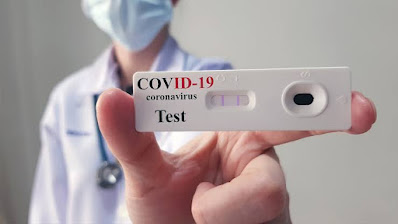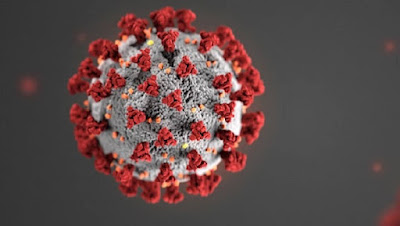Hi guys, today I'm going to talk about Covid-19 Antigen Test. Virus behind it is known as SARS-CoV-2, now why 2? Answer- it is belong to the same strain of SARS virus.
What is antigen?
When any kind of foreign particle enter in our body it known as antigen. This antigen could be any micro organism (virus, bacteria, fungi etc).
On July 23, India approved a rapid antigen test to detect SARS-CoV-2 infections. The product is called the Pathocatch COVID-19 Antigen Rapid testing kit, developed and manufactured in India by Mylab Discovery Solutions. The test will be used as part of an integrated program to speed the detection and management of those infected by SARS-CoV-2. The targeted groups of people are the ones who are both capable of transmitting the disease to others and at risk of falling ill with mild to life-threatening symptoms of Covid-19. At present, more than 1.4 million people in India have tested positive for SARS-CoV-2, and the number is rising rapidly. On the day the new test was approved, 45,720 new cases of infection were reported.
The antigen test will be used in conjunction with standard PCR tests. The SARS-CoV-2 viral particle is comprised of three types of substances: RNA (the virus genome), virus-specific proteins, and lipids. The PCR tests detect viral RNA and antigen tests detect viral proteins. These two types of tests have complementary advantages and disadvantages.
PCR tests are very sensitive, capable of detecting only a few virus particles. PCR tests are also highly specific—a positive reading is a sure sign of infection. Under ideal conditions, PCR tests can detect greater than 98% of those with active virus replication. The actual detection rate varies, not so much because the test lacks sensitivity, but rather from difficulties in obtaining the sample from deep intranasal or throat swabs. PCR tests require relatively sophisticated equipment that is often available only in centrally located licensed facilities. Although analyzing the results of the tests requires only hours, sampling, transporting, and reading and reporting the results of the test may result in many days of delay, depending on how efficient the complete testing and reporting cycle is. Point of diagnostic PCR tests exist, which are capable of much more rapid readout. However, these typically lack the accuracy obtained in reference laboratories. Some reports place the accuracy of rapid point of care PCR tests as low as 50%.
PCR tests are often expensive. The actual cost to the testing facilities, whether public or private, is not easy to find. Consumers may pay between $120 to much more than $300 per test. It is worth noting that the cost of large scale PCR screening can be driven to as low as $5 per test. That is the cost of the PCR test used to screen over 4 million Egyptians as part of the 100 Million Healthy Lives Campaign.
As previously mentioned, antigen tests detect the proteins of the virus. The tests make use of antibodies that recognize the virus proteins, triggering either a color change or an electrical signal. The advantage of antigen tests is that they are rapid, with the results appearing within five to thirty minutes, depending on the test. The sample may be obtained from a nasal swab or saliva. The technology behind antigen tests is much simpler. No complex equipment is needed. To the user, they resemble a pregnancy test. They can be packaged as a slide cassette for anyone to use and read. The unit cost to manufacture an antigen test can be less than fifty cents apiece.
The disadvantage to antigen tests is sensitivity. Antigen tests can require significantly more virus particles as compared to the most sensitive PCR test. Practically, that means that antigen tests fail to detect many people who are actually infected. The recently approved Pathocatch test claims that it detects about half of those infected.
Virus with protein spikesSpecificity, the ability to solely detect SARS-CoV-2 can also be an issue with antigen tests. Antibodies are inherently less specific than PCR. With care, the number of false positives can be reduced to a very low level. The antigen test that received FDA Emergency Use Authorization in the United States, as well as those in use in other countries, claim detection rates higher the 50%. However, none are as sensitive or as specific as PCR.
Recognizing the advantages and disadvantages of both antigen and PCR tests, the Indian government devised a strategy that plays to the strengths of both. Everyone is first screened with the antigen test. Those who test positive are considered infected. That test is completed on-site in less than thirty minutes. Those that test negative are considered still at risk of infection. They are then subject to a PCR test. The dual antigen-PCR strategy system has the advantage of quickly identifying about half of those infected. They can then be isolated and their contacts be traced without delay. Pre-screening with a rapid inexpensive antigen test reduces the total number of people requiring PCR tests. The program has an added advantage, as the true capture ratio of those detected by the antigen versus the PCR tests will be quickly known.
It is worth watching the India experiment closely. Reliable, rapid, and inexpensive antigen tests, even those that detect only half of those infected, will shorten the time to identification, isolation, and contact tracing. The impact of quickly identifying at least half of those infected on the course of the pandemic can be significant, depending on the follow-up procedures and protocols.
I expect the sensitivity and specificity of the antigen tests to improve with time. I can imagine a time, sooner rather than later, when self-administered saliva-based antigen tests will be cheap and widely available, perhaps costing no more than fifty cents. These little slips of plastic may be a real game-changer for the pandemic in the India and around the world.
Thank you guys, keep following- What maybe you don't know about health and politics









0 Comments